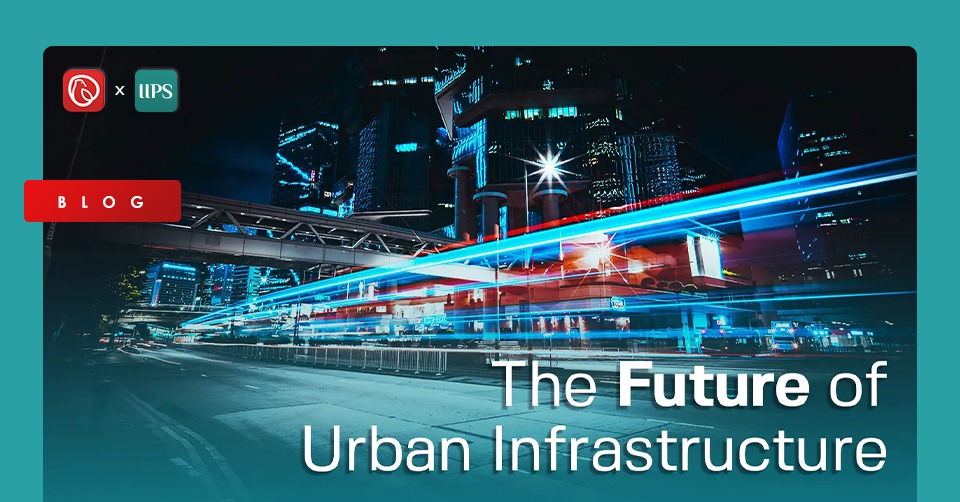Introduction
Understanding the profound role that infrastructure plays in human societies can seem pretty straightforward. Infrastructure is more than just a series of assets that come together to provide essential services; it can effectively play a role in improving human lives and societies. However, its importance and relevance to the sustainable growth of cities are often overlooked and undermined. Investments in technology and innovation for urban infrastructure are long due, considering most industries have already taken aboard the fourth industrial revolution. The construction industry is notorious for its slow adoption of technology due to high stakes being involved in the process and fear of trying out new methods which are less effective. However, infrastructure development boosts the economy and leads to new opportunities for fighting climate change and environmental degradation. Continue reading to understand the importance of technology in the future of urban infrastructure.
Technology and Infrastructure
By 2050, the population living in urban centres will increase manifold. With the increasing population, it is essential to focus on how technological innovation will help deliver a sustainable future. Making cities sustainable includes the provision of renewable energy; instead, the effort has to be more inclusive in architecture, design, urban planning, and infrastructure. Therefore, keeping in mind how technology has impacted several other industries, it is high time that infrastructure development uses technology to increase overall effectiveness and sustainability. With advancements in 3D printing and architectural design advancements, several factors related to urban infrastructure can be handled more efficiently and cost-effectively. Generative design has now allowed architects to view a building in thousands of different configurations depending on multiple factors, even before laying a single brick on the ground. The technology is disruptive as it will require far fewer resources and allow many designs to be considered while considering sustainability and environmental friendliness. Much of the developed world uses 3D printing to construct buildings and infrastructure quickly using standardised materials, helping to create more robust structures for added strength and stability. Lastly, with the introduction of the Internet of Things, many devices used daily by consumers and organisations can now be integrated with sensors that collect multiple aspects. This opens up vast options for the technological realm as artificial intelligence can analyse this data and provide better services. Hence a more effective utilisation of space and the devices is therein. Therefore, it can be seen that technology is already playing a large part in the construction sector, and future infrastructure projects will largely depend on the adoption of such disruptive technologies (IGI, 2021).
What can be done to Incorporate Technology in Infrastructure?
The world is experiencing a large wave of urban growth. More than half of the world’s population now lives in towns and cities. Therefore, the problems created by rampant urbanisation are among the most critical challenges that need to be dealt with. However, challenges often hold great opportunities and responsibilities at the same time. As a sharp focus on sustainability can be seen in much of the developed and developing world, the private sector is continuing to invest in ways that can reform society. An innovative and sustainable city can transform lives using technology. However, technology can only be incorporated into infrastructure by creating new ecosystems, creating new business models, or enhancing and building skills and education. It is the responsibility of the public sector to coordinate all such efforts which contribute and help towards the adoption of technology for infrastructure development.
Creating a new ecosystem entails focusing on the interconnectedness of natural and built human systems. By treating infrastructure as a vital part of such systems, approaches can be formulated to prepare communities for technological transitions which provide engagement and assistance for those impacted by the change. Furthermore, owners and operators of digital enterprises can also encourage infrastructure asset owners to adopt newer strategies. By developing a digital marketplace for public data, people can access information and understand the technological changes being implemented in their community. Lastly, innovative thinking must be inspired by engineers and frontline infrastructure workers. If all these steps are duly followed, a new ecosystem can be created where technology and infrastructure are tightly integrated to provide humans and societies with a more sustainable and environmentally friendly future.
The second step to incorporating technology with infrastructure is to develop new business models. This can be done by framing infrastructure development to improve economic, environmental, and social issues. Once businesses realise that the idea is beneficial for the economy and the public, it is bound to become standard for future construction and infrastructure planning and development activities. Another necessary step is to design procurement models that are more collaborative to minimise the risk of adopting new technologies. Lastly, a thorough cost-benefit analysis must be included for all types of financial and non-financial considerations. This will allow businesses to see the benefits of adopting new technologies while also preparing for the initial added cost. However, the evidence favouring technological breakthroughs helping societies achieve a more sustainable future is nevertheless overwhelming.
Lastly, technological adoption largely depends on building skills and education. The construction sector needs to understand what roles can be retained in the future and what teams or departments will be required thereon. It is evident that by adopting some technologies, mundane and repetitive tasks can be automated, requiring less labour and machinery. However, where some roles might vanish, countless others will emerge. Therefore, it is necessary to introduce an impact-focused curriculum to attract a new generation of talent. higher management also needs to be upskilled so that a proper understanding of the operations can be achieved. Furthermore, building a technologically savvy university or educational institute focusing on infrastructure engineering and information management will also play a large part in preparing the human resource required. Lastly, skills and resources available to the government must also be narrowed down by removing the gap between the public and the private sector (WEF, 2021).
Conclusion
Infrastructure plays a vital role in shaping our societies and performing essential functions for the continuity of urban life. As the world continues to recover from the pandemic, a boom in the construction industry presents an opportunity to make critical improvements that will affect future generations. It also offers an enormous opportunity to develop a sustainable and environmentally friendly future. By developing new ecosystems, creating new business models, and building skills and education training, it is hoped that infrastructure development can play a vital part in Making any society sustainable in the future.




